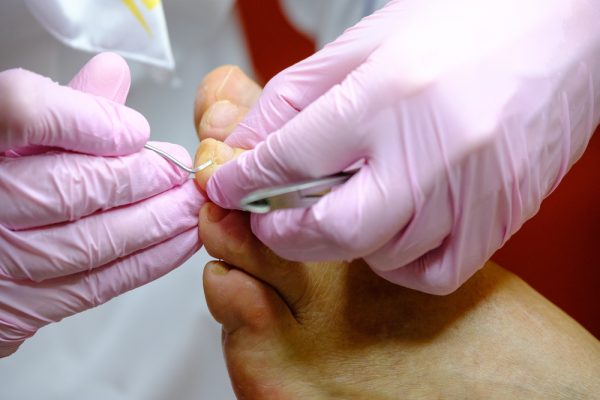In the toe, a toenail can become embedded or ingrown. This happens when your toenail’s edge grows into the surrounding skin. In most cases, an ingrown toenail is caused by improper trimming of your nails or wearing shoes that are too tight. Ingrown toenail treatment is very important, as it becomes more painful. It can also happen if you stub your toe on something while walking. Other possible causes include aging and having a family history of this condition. Ingrown nails are more common in adult males than females but can affect anyone who has them.
Cause 1: Cutting nails too short
It can be hard to tell whether or not your nail is too short, but here are a few tips to help you out. First, if you have the habit of cutting your nails straight across, try cutting them in a rounded way instead. The rounded edge will prevent any sharp edges from scratching you when it grows back and will also prevent ingrown nails by keeping the nail from getting stuck inside your skin.
If you have a hangnail that’s painful or irritating after clipping them off, don’t worry! Just put some moisturiser on it before bedtime, so they don’t get dry and cracked overnight while sleeping.
Cause 2: Wearing shoes that are too tight
It is essential to wear shoes that are comfortable and allow the toes to move freely. Wearing too-tight shoes can lead to ingrown nails because they force your toes into a position where they rub against the shoe, causing your nail to grow into the skin instead of over it. This can lead to pain and infection if left untreated, so make sure you’re wearing the correct size shoe!
Cause 3: Trauma, such as stubbing your toe
Trauma can cause the nail to grow into the skin or curved shape. This can happen if you accidentally hit your toe on something hard, and it causes a small break in the skin. The broken skin may lead to an infection that leads to an ingrown nail. If this happens, you should see a doctor immediately because these types of injuries are prone to getting infected, and badly infected toes can be very painful.
Cause 4: Aging
As you age, your nails will become brittle and develop small cracks. In addition, an older adult may notice that your toenails have become flat or thin and may even peel away from the nail bed. These changes make your nails more prone to cracking and developing ingrown edges.
If you notice a change in the shape of one of your toenails, you must immediately see a health care provider for treatment options. Older adults often have trouble healing ingrown toenails because they have other health conditions or are taking medications that make their bodies less able to recover from wounds (such as diabetes).
Other Causes
Other possible causes of ingrown toenails include having a fungal infection in the toenail and doing activities that involve repetitive pressure.
People with diabetes are more likely to develop ingrown toenails because their blood vessels can’t supply enough blood to their feet. This can lead to painful ulcers on your toes and skin damage from bacteria.
Read More: A Guide to Improving Your Overall Health Naturally
When pregnant, hormone levels rise dramatically, which may cause changes in your body tissues and increase your risk for infections like ingrown nails.
Symptoms
Common signs of an ingrown toenail are pain and tenderness when touching the affected area. The skin around the toenail may also be swollen and red.
The most common symptom of an ingrown toenail is pain, which can occur at any stage of the problem: during or after walking, when wearing shoes, when bending or straightening your toe, or when touching your nail.
Conclusion
If you think your ingrown toenail might cause pain, you should see a doctor or foot specialist for an ingrown toenail treatment. They’ll examine your toe and advise on how to treat it so it doesn’t cause any long-term problems.


